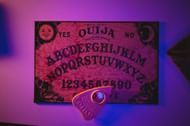The Vallecas Files places the Vallecas case back in the spotlight with a three-part HBO Max docuseries. The project looks at a Madrid family, a teenage death in the early 1990s, and the swirl of fear and rumor that followed. It also traces the story back to a reported Ouija session at school that many believe set the timeline in motion.
The series mixes archival video with new interviews. It tracks how a private tragedy reportedly turned into a national story. Press listings point to a November rollout, with some materials listing November 7 and other coverage noting November 8. Episodes focus on the home, the reports, and the claims that would later feed TV shows, books, and even a feature film.
A private loss became a public case, and the debate never fully ended.How The Vallecas Files frames the Vallecas case
Across three episodes, The Vallecas Files sets out the basic arc. A teenage girl, Estefanía Gutiérrez Lázaro, dies unexpectedly. Soon after, relatives report strange sounds, cold spots, broken glass, and moving objects.
The show treats those claims as testimony, not proof. Family voices are placed alongside physicians, journalists, and researchers. Viewers get timelines, floor plans, and period footage that ground the story in a small apartment in Puente de Vallecas.
 Media attention grew around the Vallecas case (Image via PexelsUnsplash)
Media attention grew around the Vallecas case (Image via PexelsUnsplash)The series also marks how TV crews and tabloids jumped on the case. That part matters. Public attention shaped how neighbors spoke about the home and how officials responded. The docu-series keeps the tone measured, but it doesn’t look away from the spectacle that grew around the address.
The Vallecas Files case overview
The background starts with a reported Ouija session at school to contact a friend who had died. A teacher reportedly broke up the Ouija session, and the glass shattered.
 A reported Ouija session at school that many believe set the timeline in motion. (Image via Unspash)
A reported Ouija session at school that many believe set the timeline in motion. (Image via Unspash)Weeks later, Estefanía’s health reportedly dipped. There were hospital visits. Then came the sudden death. From there, nights in the apartment grew tense. Family members described voices, a shadowy figure of an old man, and religious items found on the floor.
Dates matter in this timeline. The death sits in the early 1990s; the most cited home incident list peaks the following year. Reports speak of photos damaged in odd ways and toys striking walls. The family later moved out. New tenants said nothing unusual happened. Those gaps between versions are part of the reason the case endures.
Also read: The true story behind Eloá Pimentel case ahead of Eloá the Hostage: Live on TV
The Vallecas Files and the late-night police visit
One scene in The Vallecas Files highlights the night officers entered the home after 2:00 am. The family was waiting outside in the rain. Inside, officers noted banging sounds and a wardrobe door that, by one account, swung open even with a key in the lock. A wall crucifix was found on the floor. A staff report used phrasing about “events without clear explanation.”
According to Telemadrid, this became the rare Spanish police document that admits such “inexplicable” facts in a domestic call tied to alleged paranormal activity. In the series, that late-night visit is linked to disturbances said to follow the Ouija session.
The series lets that paperwork sit next to skeptical views. Doors can rattle. Old buildings can creak. Memory can stitch separate moments into a single scene. Even so, the nighttime entry, the written notes, and the signatures give the episode its anchor.
The Vallecas Files and the story’s afterlife
The case did not fade. A 2017 horror film took cues from the timeline and the apartment layout. Radio shows and magazines revisited the family’s accounts. In The Vallecas Files, relatives recount how attention brought strain, while researchers retrace the earliest testimonies and look for medical and social triggers that might explain the events.
The series also pauses on media ethics. Cameras walking through a grieving family’s home is a stark image. Interviews recorded in cramped rooms show how easily rumor can grow. By cutting between then and now, The Vallecas Files asks viewers to weigh the pull of a good story against what can be proven.
As the credits roll, the record stands in two columns. On one side, the archived claims and a nighttime police visit. On the other, the gaps in evidence and the normal quirks of an aging building. The show doesn’t settle the question. It lays out a case file that still splits opinion, and it does so with dates, rooms, and faces that keep the story grounded.
Also read: Will there be a new episode of 48 Hours this week? Details explored
Why did you not like this content?
- Clickbait / Misleading
- Factually Incorrect
- Hateful or Abusive
- Baseless Opinion
- Too Many Ads
- Other
Was this article helpful?
Thank You for feedback
Edited by Preethika Vijayakumar

.jpg) 22 hours ago
4
22 hours ago
4
 English (US)
English (US)